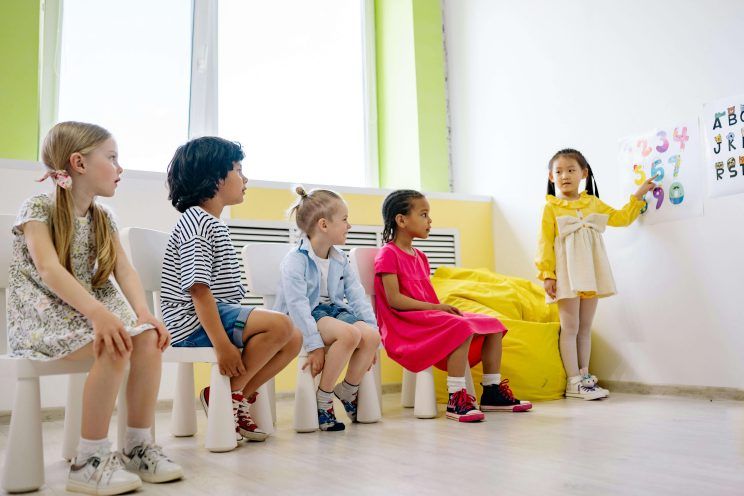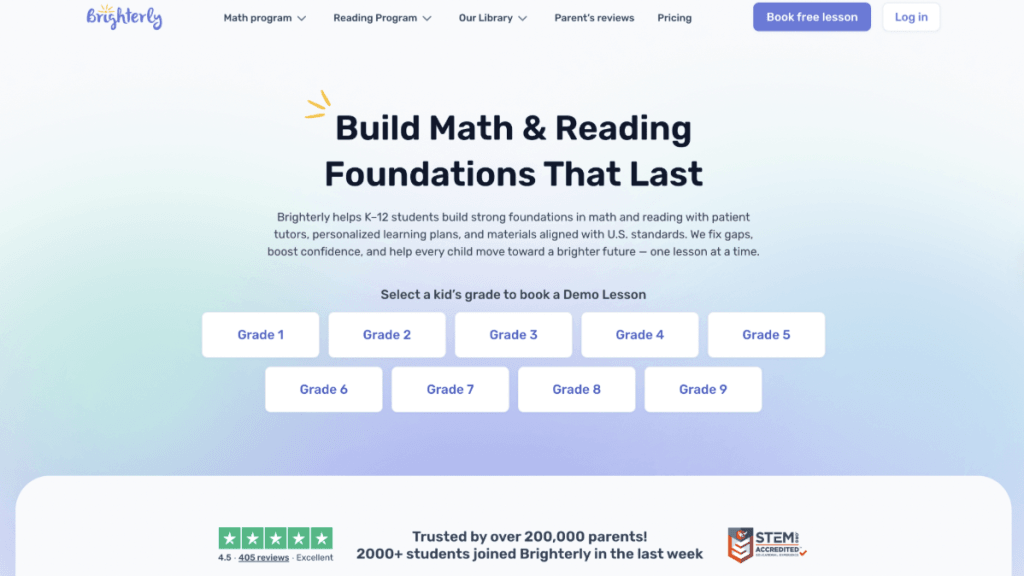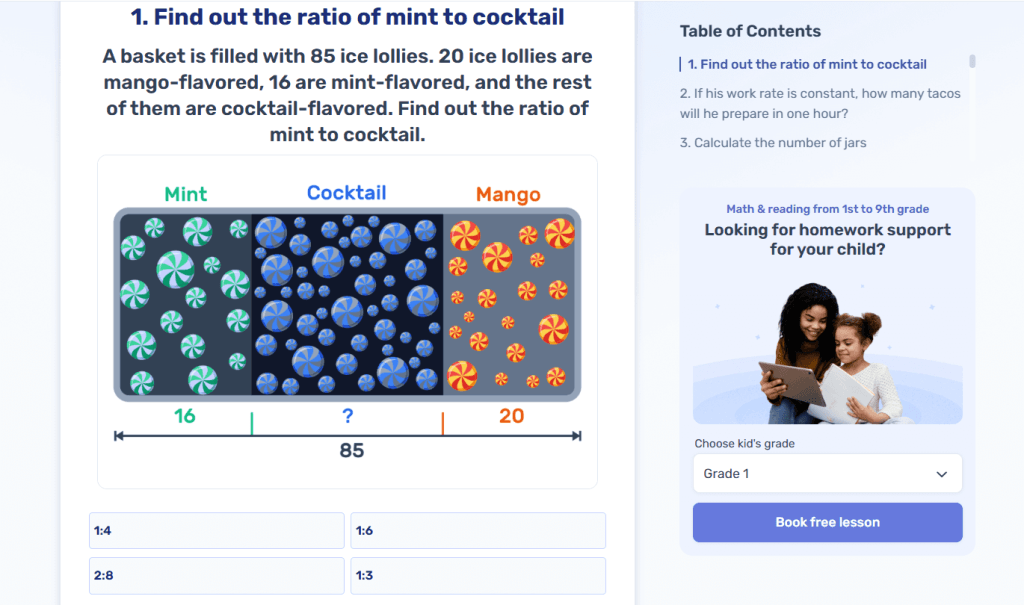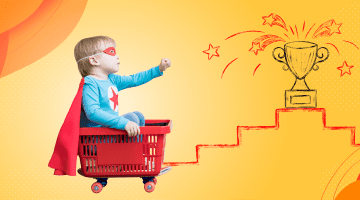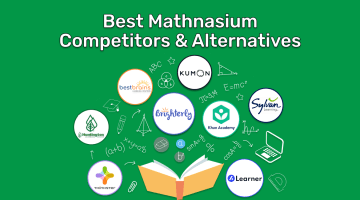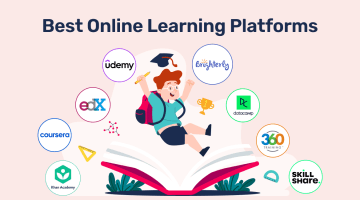10 Project-Based Learning (PBL) Examples
reviewed by Jo-ann Caballes
Updated on November 5, 2025
Project-based learning (PBL) is loved by many teachers and educators, as it teaches students to actively engage in real-world, hands-on, and personally meaningful projects. If you want to adopt the project-based learning approach for your kid, it’s a good idea, and today, we’ll dig into 10 project-based learning examples and explore how you can make it your daily learning routine.
Key Points:
- Definition of project based learning refers to a teaching method that engages students in learning through hands-on experiences and real-world problems.
- PBL is geared towards students in grades 3–12.
- Project based learning topics include STEM, social studies, language arts, and more.
- Brighterly is one of the best e-learning platforms implementing project based learning in education.
What is project-based learning?
Project-based learning is a teaching method that engages students in learning through hands-on experiences and real-world problems to gain a meaningful understanding of a specific topic.
To put things into perspective, a project-based learning curriculum means focusing on extended tasks that last from a week to a semester. During this time, students usually solve diverse real-world tasks and experience hands-on learning.
Why is project-based learning important?
PBL is important because it allows a collaborative classroom experience. Benefits of project based learning include:
- Project based learning approach focuses on a student-first approach
- Promotion of a deeper topic understanding and encouragement of kids to use creative thinking
- Showing children how to implement a specific skill in their lives
Here’s how each benefit plays out in more detail.
Firstly, the very essence of math project-based learning implies collaboration and cooperation. Students work in set groups to come up with a collective final project. As they develop the solution, they learn to share ideas more explicitly and work together towards a common goal. As a result, they get a presentation that entails a particle of knowledge each of them shares.
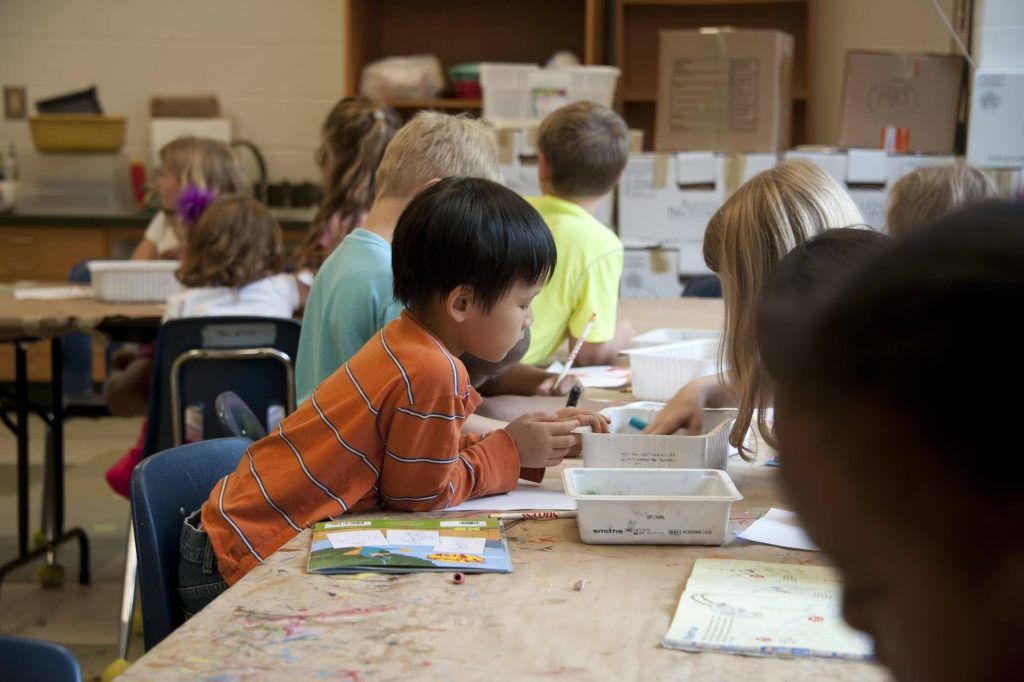
Secondly, projects for PBL are focused on children’s experiences. In traditional learning, teachers usually explain the material and guide kids on all tasks. PBL changes the narrative — it is now children who take the stage, developing original ideas and trying things out. The teacher’s task is to support and assist them when it’s important.
Thirdly, PBL ideas imply that kids use a theoretical basis to develop their unique thinking, rather than learn material by rote. Literally, it means learning by doing: to get a deeper grasp of project-based learning topics.
Finally, project-based learning in mathematics allows kids to solve real-life tasks and apply difficult math concepts accordingly. This will inevitably encourage them to use math and provoke better interest in the subject itself.
Brighterly math project-based learning
Project-based learning math became indispensable for multiple advanced learning programs — both online and offline. Most progressive platforms understand the many-sided benefits of this approach and do their best to integrate it into one-to-one and group-based learning.
Brighterly is one of those platforms actively adopting PBL. But what is it?
The Brighterly math and reading platform connects 1–9 students and professional reading and math tutors for learning. The core idea of the Brighterly approach is to make studying fun and approachable for kids with various learning gaps. Over 200K+ parents joined Brighterly only last year, resulting in an average Trustpilot rating of 4.4 and hundreds of excellent reviews.
Here’s how project based learning math approach works on the Brighterly platform
- During a first demo session, a math tutor identifies a child’s learning gaps, goals, strengths, and weaknesses to build a perfect math program.
- Then they define a project that would align with the student’s interest and academic needs, fitting the current school curriculum.
- During the math classes an assigned tutor will provide support, guidance, helpful materials, and tools to successfully finish the project.
- As much as a student can, they take the initiative, doing research and exploring the topic with all the support needed from a tutor.
- Usually, Brighterly project-based learning ideas take a month to complete. And while the child is on the task, they are also mastering the subject, closing learning gaps, and improving their confidence.
Now, let’s talk more about the Brighterly benefits.
Professional tutors specialized in e-learning
The Brighterly tutors are trained to guide project based learning in math in a fun, interactive, and effective way. The platform only collaborates with experienced tutors who know how to create a safe space for kids to learn and explore.
Adapted math lessons for every child
The Brighterly math and reading platform builds a personalized curriculum for each kid. But it doesn’t mean that the program is separated from the school curriculum. Its learning plan is fully aligned with US school requirements, so parents don’t stress that their kids won’t catch up with the class.
Free learning resources
The platform provides students with free resources, like:
- Math worksheets in PDF format designed by the top educators to close learning gaps and improve material while learning solo.
- Math tests are also available to identify learning gaps with ease.
Want to make use of PBL for your child? Don’t hesitate to try it for free during a demo lesson!
Note: Brighterly is available at affordable prices, starting at $17.3/lesson for a plan with 3+ weekly lessons.
What are project-based learning examples?
- Act on a current event
- Create a community mural
- Create your website
- Produce your podcast
- Shark Tank pitch
Now that you know the definition of project-based learning and understand its value, you’re probably ready to jump right into action – let’s explore project-based learning: top examples together.
Act on a current event
In project-based learning mathematics examples like this one, you’ll have to discuss the consequences and suggest potential solutions to a current event. For example:
One common example of such a PBL math project is discussing rising inflation rates and their impact on prices in the country. Obviously, a task like this requires detailed research on the related changes, like food, housing, and gas prices.
To gather information like this, a kid usually uses math stats to calculate future inflation and its impact on prices. Once it’s done, they can focus on solutions: valuable tips on how to mitigate the inflation-related risks.
Create a community mural
Ideas for project based learning, like this one, encourage kids to create a mural form of art. The process requires scrutinous work, including figuring out the design, thinking about the place for the construction, creating a budget, gathering necessary permissions, etc. Taking all this into account, it can be a wonderful project based learning examples elementary idea for your child.
This art-related project is one of those brilliant ideas for project-based learning since it combines creativity and logical thinking. On the one hand, children have to reveal their innovative side while constructing a relevant design. But on the other hand, they also must account for all the juridical and financial questions.
Create your website
These days, creating a website is an engaging and easy-to-implement project idea with services like Wix or Squarespace. Examples of project based learning of this kind can be brilliant for both groups of learners and as an individual learning task.
There are many potential ideas for developing a web platform, including a website related to optimizing energy consumption, enhancing productivity with time management tools, or improving budget management. All in all, it can be one of those wonderful project based learning ideas for middle school.

Think about this: the seemingly simple project can help to:
- Boost innovation
- Improve computer skills
- Enhance knowledge on a specific topic
- Elevate creative planning
Produce your podcast
Similar examples of project-based learning are quite universal and flexible. Teachers or parents commonly ask students to create a podcast on a viral topic. It shouldn’t be a long piece; however, the whole process will encourage in-depth digging into the material.
Shark Tank pitch
Inspired by the “Shark Tank” reality show, this project lets students feel like young startup owners and investors. And it ticks quite many skill boxes, too! As any newcomer to a business realm, they will have to go through a series of steps:
- Conduct market research
- Test the products they want to work with
- Convince investors to get funds for their business.
Analytical thinking, research, public speaking, budgeting, and collaborating — the seemingly simple program helps to master all these skills.
Project-based learning in math
Math is among the most problematic subjects, raising multiple concerns among young learners. But not with PBL math! This approach is just ideal for showing the real application of tangled mathematical concepts. So, it’s definitely worth your attention.

Here are some project-based learning activities for elementary students and school graduates — everyone can find something for themselves.
- Exploring patterns as one of the project-based learning examples undermines the creation of original art forms through patterns. While crafting them, children in elementary school will explore symmetry, reflection, and rotation concepts. Plus, they will also easily learn to memorize shape names.
- Building a house is among the best project-based learning ideas for middle school learners. Here, students must employ their engineering knowledge to develop solid and reliable house construction. Then, they will have to apply mathematical concepts to estimate costs and evaluate if their expected expenses fit the budget.
- The alternative energy project plan is both engaging and practical. It’s an example of how to implement high school project-based learning. In terms of this task, children have to analyze energy consumption in their homes and develop ideas for reducing the related expenses.
Wondering what other problems can suit your home classes? Here’s a clue for you:
Note: Check out the article on How to solve math word problems and learn how to successfully integrate them in project-based learning and beyond.
5 project-based learning ideas
Now that you are well aware of the ground-breaking benefits of project-based learning, you probably struggle to implement this approach for your kid. Indeed, with proper preparation, you can turn a project-based task into an engaging and non-trivial family activity.
So why not pick the best idea out of the list and test it out today?
PSA video
Define what burning issue deeply touches your child, and let them discuss it in detail. First, they will have to conduct thorough research and write a script for their video. Then, they will get engaged with the whole filming process.
Obviously, an activity of this kind employs a good portion of creative thinking and planning, which will prove of much benefit.
Potential topic ideas you can use for inspiration include:
- Creating a video on budgeting and finance management. It can describe building a budget plan using basic arithmetic and percentages.
- Crafting a clip explaining how to read and understand statistical data.
- One more idea for implementing project-based learning in education concerns the health and wellness sector. In terms of it, your kid can delve into explaining the Body Mass Index (BMI) formula or calculating the caloric daily needs.
Building a model bridge
This one is a perfect math project based learning example to combine science, engineering, and math. In this task, students will have to do just that — build a model bridge. The process involves researching types of bridges, finding suitable materials, and testing a ready-made construction.

The strength of such project-based learning activities is that they will fit both class groups and individuals. So, yes, you can utilize it even if you cannot invite their friends to participate.
Food bank & volunteering
As implied, this initiative involves a volunteering element. First, organize a visit to your local food bank to review the latest data. In the process, the child will have to communicate with the staff, gathering information about current donations and expenses.
Then, they should analyze the information gathered. They can utilize math modeling to define how different initiatives can influence donations and volunteering levels.
It is a great high school project based learning idea to boost scores for college.
Field trip
For this project, you should choose a natural area strongly affected by human activities. It can be a coastal region with trash buildup, a deforested area, or a polluted waterway. The aim of your trip is, thus, to collect as many valuable details about the current ecological consequences as possible.
Once done, compile the available information into convenient spreadsheets or documents. Ask your child to use mathematical modeling to estimate the environmental impact of the collected data. To finish this PBL teaching, encourage them to present all their findings in graphs, charts, and maps.
Math mock trial as a PBL example
We must warn you: this project will involve lots of work from your side. First, be sure to invite your child’s friends, as each will take a specific role in the court (judge, prosecutor, witness, solicitor, etc). Besides, you must find or make up a case where mathematical evidence plays a decisive role.
Encourage children to collect math-related facts about the process. Once ready, simulate the trial where each side presents applicable information, performs calculations, and explains their findings.
Advantages and disadvantages of project based learning
Project based learning in math puts students at the center of the learning process. It means more freedom for those who study and fewer teacher restrictions. However, freedom often comes with pitfalls, as not all students know how to manage it correctly.
Even though PBL contains significant powers, it also has weak points of its own. Solution? Know all the pros and cons of project based learning beforehand. Let’s discuss them in detail.
Benefits of project-based learning

These are the main benefits of project based learning:
- Development of critical thinking
- Creativity boosts
- Increased problem-solving skills
- Deeper engagement in a topic
- Enhanced student collaboration
- A better understanding of the provided material
- Fostered communication
- Evoking natural curiosity
The list can be continued…
In fact, even with PBL, the teacher’s (or parent’s) role remains vast because they are the ones to organize and guide the whole process correctly. If done properly, projects in learning will turn into a dynamic and vibrant way to spice up the whole process.
Note: If you want to know which schools are using project based learning activities, check out this article — Math Websites For Middle School.
Disadvantages of project-based learning
But what’s on the flip side? Here are some disadvantages of PBL in education:
- Developing apathy
- Worse adaptability to active learning
- Reduced productivity
Let’s discuss each of these.
First, math projects encourage students to develop ideas according to their interests. But what if a student doesn’t have any? They will likely engage less with the whole process. If that’s the case, an in-depth session with a mentor can help. Spend some time sitting by your child and trying to clarify what ticks — you’ll surely see the positive dynamics soon.
Secondly, less active students may feel drawn back during project work. They will likely stay silent during the flow and won’t participate much, which results in little to no positive results. One-to-one sessions and individual projects help in this case. Eventually, we must perceive children as they are — all they need is some extra attention from our side.
Finally, some kids need extra guidance on conducting and working in a group. If not provided, they fail to communicate correctly. But with a little extra counseling, you’ll surely see positive progress soon.
Note: If you want to explore more info on how to effectively teach math, check out the Math Goals For IEP article.
Conclusion
PBL teaching is a great thing for your child’s personal and professional growth. But how to successfully implement it in your child’s learning? Easy — find their learning style. Whether they’re a team player or a humble, reserved learner will define their personal learning journey.
If you’re not sure how to do it correctly, don’t worry! Brighterly is a perfect platform for that, with professional tutors who can find the best teaching approaches for each kid. Book free lesson today and let your kid experience fun and enjoyable math learning!

